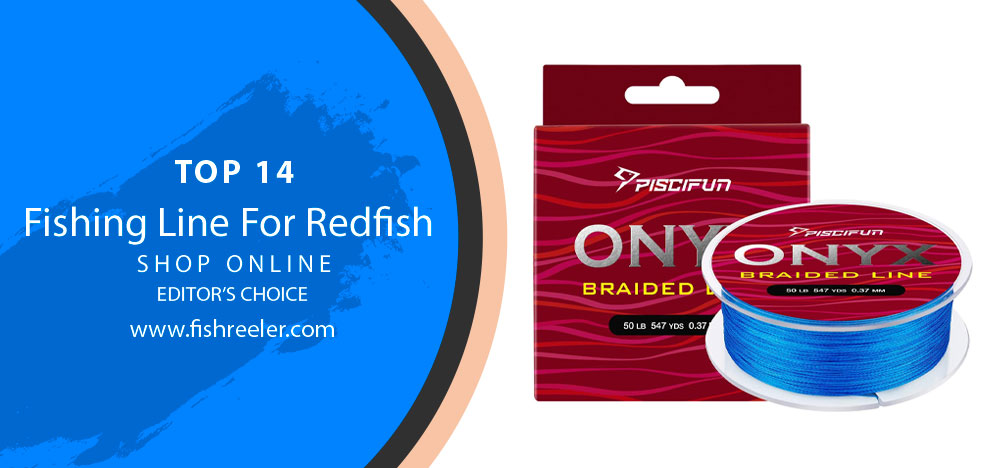
Unraveling the Secret to Redfish Mastery! 🎣
Ever wondered what sets apart a successful day of redfish angling from a fruitless one? Hint: it’s not just about the bait or technique—it’s the fishing line.🔍
When it comes to redfish fishing, not just any line will do. Here’s why you should invest in a specialized fishing line for redfish:
🥇 Top-tier Performance: This isn’t just another fishing line—it’s designed to withstand the pull, twists, and turns of a robust redfish, ensuring your prized catch doesn’t escape.
🌊 Battle-Ready Against Elements: Face saltwater conditions head-on! These lines resist corrosion, ensuring longevity and a great return on investment.
🌟 Sensitivity and Strength Combined: Detect even the subtlest bites, while having the backbone to haul in trophy-sized fish.
🔗 Minimal Stretch: Achieve better hook sets and feel what’s happening underwater like never before.
Advantages At A Glance:
📈 Enhanced Durability
🎯 Precision in Casting
🐟 Maximizes Catch Rate
💡 Clear Visibility – Less Spooking!
Don’t just fish; fish smart. With the right line tailored for redfish, you’re not just casting a line—you’re securing a success story. Dive into our article and discover why this line is a game-changer in the world of redfish angling! 🚀
The Redfish Realm: Angling’s Revered Pursuit 🎣
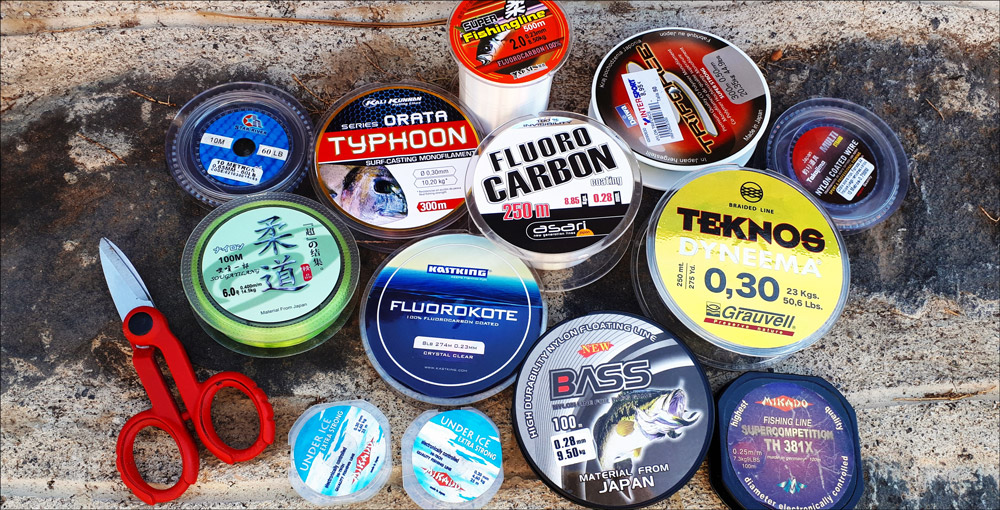
Redfish, also commonly known as red drum, have long held a prestigious spot in the world of angling. With their copper-hued scales glinting beneath the sun and their propensity for a good fight, it’s easy to understand why they’ve become such a favorite for countless fishing enthusiasts. From the serene marshes of the Gulf Coast to the brackish waters of the Eastern Seaboard, redfish command attention and respect.
But as any seasoned angler will tell you, the thrill of the chase is just as much about strategy as it is about luck. The majestic redfish, with its powerful runs and stealthy approach, demands more than just any standard equipment. While the right rod, reel, and lure are crucial, there’s another key element that often doesn’t get its fair share of limelight but is arguably just as vital: the fishing line. 🧵
Why such emphasis on the fishing line, you ask? Think of it as the unsung hero, the bridge between you and your prized catch. A mismatched or subpar line can mean the difference between a triumphant day and a story of “the one that got away.” As we delve deeper, we’ll explore the intricate relationship between redfish and the lines that catch them, ensuring that your next fishing adventure is not just memorable, but legendary. So gear up, and let’s embark on this journey to mastering the art of redfish angling! 🚀
Understanding Redfish: The Battle Begins Beneath 🌊
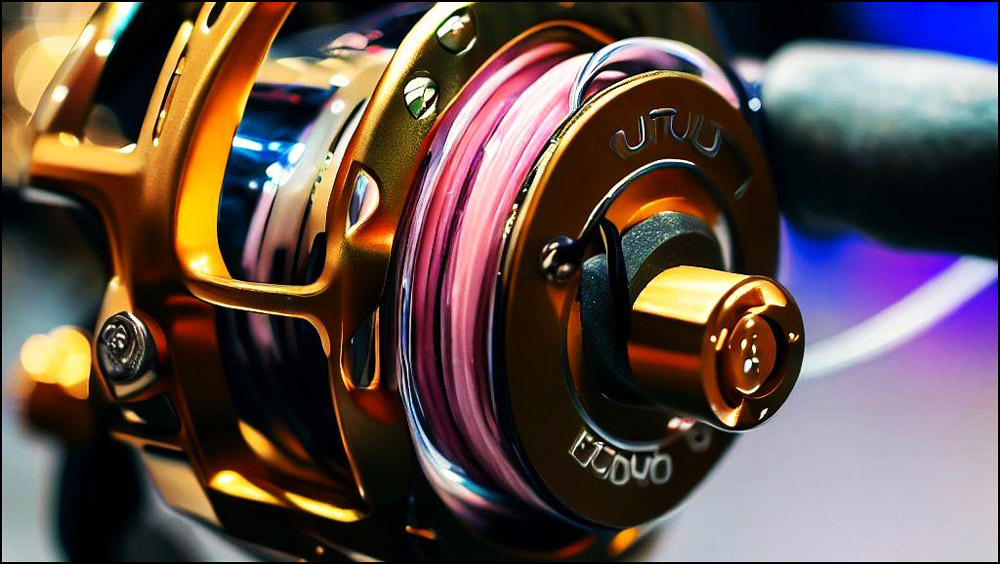
A Glimpse into the World of the Red Drum
Known scientifically as Sciaenops ocellatus, the redfish or red drum is a marvel in the marine world. Characterized by its distinct reddish-bronze hue and an often prominent eyespot near the tail, this fish has a captivating presence.
Size & Stature 📏
The redfish’s size can vary greatly based on its age and environment. While juveniles typically measure around 20 inches, mature redfish, often termed ‘bull reds’, can easily surpass 40 inches and weigh over 40 pounds! These giants are not just formidable in size but in strength, offering anglers an adrenaline-packed experience.
Habitat: Where They Call Home 🏞️
Redfish thrive in a diverse range of environments. From the marshy inlets and estuaries of the Gulf Coast to the lagoons and bays of the Atlantic seaboard, these fish have adapted to both freshwater and saltwater conditions. This adaptability means anglers can encounter redfish in various water clarity levels and depths.
Behavioral Traits 🐟
At their core, redfish are opportunistic feeders, preying on a mix of crustaceans, mollusks, and smaller fish. Their feeding habits often bring them to shallow waters, especially during warmer months. Here, they can be seen tailing as they forage, a sight that sends a thrill down any angler’s spine.
Why Their Traits Matter for Your Fishing Line
Given their robust size, powerful runs, and varied habitats, the redfish presents a unique challenge for anglers. Their strength means you need a line that can withstand sudden pulls and runs. The diverse environments they inhabit necessitate a line versatile enough to perform in both clear and murky waters. And their cunning, learned from countless encounters with predators and fishermen alike, means your line should be discreet enough not to spook them. 🎯
Fishing Line for Redfish Fishing: An Expert’s Guide
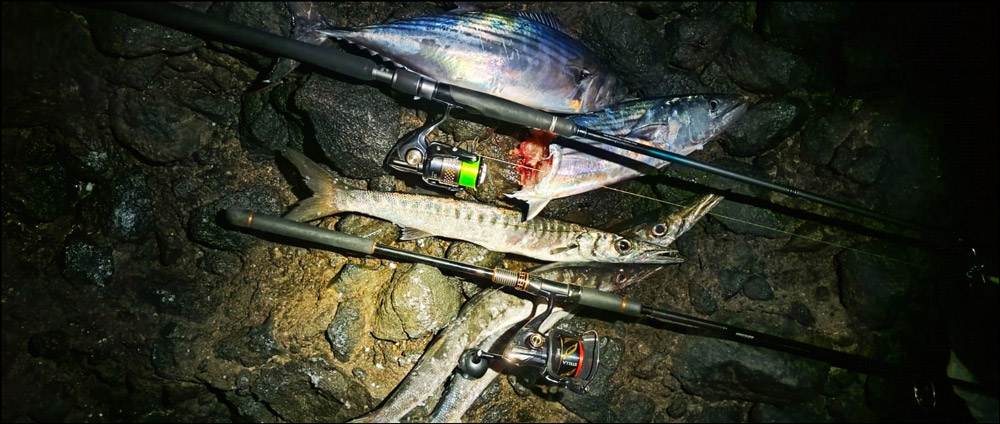
Are you tired of constantly losing redfish because your fishing line can’t handle the weight? It’s frustrating to feel that tug on your line, only to have it break and watch the fish swim away. That’s where having the right fishing rod and line combination comes in.
When it comes to fishing for redfish, the weight of your line is crucial. These fish are known for their strength and can easily break a weak line. Choosing the right rod for your fishing line weight is essential to ensure that you can handle the fight when a redfish takes the bait. In this blog post, we’ll explore the best fishing line weights for redfish and the rods that are best suited for each weight. So, let’s get started and make sure you’re ready for your next redfish fishing adventure.
1# Rio Summer Redfish Fly Line
The Rio Summer Redfish Fly Line is a specialized fly line designed for targeting redfish in saltwater environments. This line is specifically designed to be highly visible in the water, making it easy for anglers to track their fly and detect subtle strikes.
One of the key features of the Rio Summer Redfish Fly Line is its taper design, which helps to deliver accurate casts and optimal fly presentation. The line has a weight-forward design, which means that the majority of the line’s weight is concentrated towards the front, allowing for long casts with minimal effort.
The Rio Summer Redfish Fly Line is also built with a hard saltwater coating, which provides excellent durability and resistance to abrasion. This coating is designed to withstand harsh saltwater conditions and protect the line from damage, ensuring that it lasts for many fishing trips to come.
Another important feature of the Rio Summer Redfish Fly Line is its high-floating design, which allows the line to stay on the surface of the water, reducing drag and making it easier to pick up and cast. This design also helps to keep the line visible in choppy water conditions, allowing anglers to track their fly and detect strikes with ease.
Overall, the Rio Summer Redfish Fly Line is a high-performance fly line that is designed specifically for targeting redfish in saltwater environments. With its weight-forward design, hard saltwater coating, and high floating design, this line delivers accurate casts, optimal fly presentation, and excellent durability, making it a great choice for serious saltwater anglers.
Warmer weather is the perfect time to target redfish, and you’ll need a fly line that can handle the heat. Rio® Summer Redfish Fly Line is specifically designed for these conditions, with a medium-stiff core and tropical coating to ensure the line retains its performance. Its mid-length taper is ideal for casting a wide range of summer redfish patterns, with enough power for distance casting and an easy-loading head for smooth close-in casting as well.
2# Scientific Anglers Amplitude Smooth Redfish Warm Fly Line
Looking for a high-quality fly line that can take your fishing to the next level? Then check out the Scientific Anglers Amplitude Smooth Redfish Warm Fly Line. This top-of-the-line fly line is built a half-size heavy for exceptional accuracy and features Tropi-Core technology that is ideal for warm waters. Dual welded loops allow for easy rigging changes, while AST Plus enhances slickness for shootability and durability. The short head design lets you make quick, powerful casts, and the built-in Scientific Anglers Line Identification makes it easy to keep track of your line. So whether you’re an experienced angler or just starting out, the Amplitude Smooth Redfish Warm Fly Line is sure for you!
3# Rio Winter Redfish Fly Line
Check out the Rio Winter Redfish Fly Line. This tough, easy-fishing line is built with a short, powerful front taper to ensure reliable turnover, yet it has a supple core and coating that resists tangling. Its short, easy-loading head accommodates close-range casting, making it perfect for those times when you need to make a quick, accurate cast. So don’t let the cold weather stop you from getting out on the water – pick up a Rio Winter Redfish Fly Line today and enjoy worry-free fishing all season long.
4# Scientific Anglers Absolute Redfish Leader
Scientific Anglers has you covered with their Absolute Redfish Leader. This leader is made from a proprietary copolymer blend that delivers exceptional knot strength, and it’s been specifically tapered to handle heavy flies. The medium-stiff design provides abrasion resistance, while the paper-based packaging is 100% recyclable. So not only will you be landing the big ones, you’ll also be doing your part for the environment.
5# Power Pro Spectra Fiber Braided Fishing Line
If you’re looking for an incredibly strong and smooth braided fishing line, then you need Power Pro Spectra Fiber Braided Fishing Line. This top-of-the-line fishing line is made with spectra fibre, which makes it extremely resistant to abrasion. It also has a high strength-to-diameter ratio, meaning that it can handle a lot of weight without breaking. Plus, the Enhanced Body Technology (BET) boosts handling performance, so you can be sure that your line will stay exactly where you need it.
6# Acejoz 656FT Fishing Line Clear Invisible Hanging Wire
Introducing the Acejoz Clear Fishing Wire. This high-quality nylon fishing wire is perfect for hanging balloons, garlands, party decorations, and more. The clear design makes it virtually invisible against a white background or in direct light, giving your decorations a neat and professional look. With a supporting weight of up to 40 pounds, this fishing wire is sure to meet all your needs. Best of all, the Acejoz Clear Fishing Wire comes in a value pack with one roll of 0.45mm 220yds/200m fishing line, making it perfect for party supplies and decoration hangings.
7# KastKing SuperPower Braided Fishing Line
The KastKing’s SuperPower Braided Fishing Line is a perfect choice. This high-performance line is made with dynamically incorporated strands that allow for easy tying of solid knots. It also has low memory for easier casting and improved knot strength. Plus, the greater abrasion resistance decreases the likelihood of losing your fish. And because it has zero stretches, you’ll enjoy a superior hook setting and an increased catch ratio. So whether you’re an experienced angler or just starting out, KastKing’s SuperPower Braided Fishing Line is sure to give you the advantage on your next fishing expedition.
8# Berkley Vanish Fluorocarbon Fishing Line
The Berkley Vanish Fluorocarbon is a fluorocarbon fishing line that remains clear underwater. This 100% fluorocarbon line refracts light similarly to water, making it virtually invisible to fish. In addition to its superior camouflage properties, Vanish Fluorocarbon also boasts superior wet strength and flexibility. So whether you’re targeting fish in clear water conditions or dealing with tough underwater obstacles, Vanish Fluorocarbon has the strength and flexibility to get the job done.
9# Reaction Tackle Braided Fishing Line
Reaction Tackle Braided Fishing Line is designed for anglers who demand the very best. This line is engineered from ultra-high molecular weight polyethene, one of the strongest woven fibres on earth. This braided line is designed to be super tough and withstand the most demanding conditions. The Reaction Tackle Braided Fishing Line offers incredible abrasion resistance, and zero stretches, and is colour safe with UV-resistant pigments that won’t easily fade when exposed to the elements. This versatile braided fishing line is one of the best on the market and perfect for use in both freshwater and saltwater fishing applications.
10# Seaguar Blue Label Fluorocarbon Fishing Line Leader
The Seaguar Blue Label Fluorocarbon Fishing Line Leader is a fishing line leader that won’t let you down. Made from durable polyvinylidene fluoride, this clear leader is built to withstand whatever you throw at it. Plus, with a double structure fluorocarbon design, it has amazing tensile strength and virtually no stretch. That means you can fish with confidence knowing your line won’t snap under pressure. And because it’s America’s #1 leader, you can rest assured you’re getting the best of the best. So don’t take chances with your fishing line – go with Seaguar Blue Label Fluorocarbon Fishing Line Leader and enjoy a great day out!
11# Piscifun Onyx Braided Fishing Line
The Piscifun Onyx Braided Fishing Line is a great choice for every fisherman. With superior abrasion resistance, this fishing line can take a beating and keep on going. And thanks to the new epoxy coatings technology, it’s also more resistant to damage. Plus, with its strong knot strength, you can be sure your bait will stay put. And because it cuts through the water faster, you’ll be able to reach fish in even the deepest depths. So don’t waste any more time with inferior fishing lines – try Piscifun Onyx Braided Fishing Line and see the difference for yourself!
12# Piscifun Lunker Braided Fishing Line
Introduce a top-of-the-line braided fishing line Piscifun Lunker. This braided line is made from Netherlands material and is crafted with precision for maximum strength and durability. The nano-coating treatment makes the line smoother and more wear-resistant, while the zero stretches ensure better transmission of information from your lure to the fish. With a thinner diameter and stronger construction, Piscifun Lunker is the perfect choice for anglers who demand the best in terms of performance and quality.
13# HERCULES Cost-Effective Super Strong Braided Fishing Line
If you’re looking for a quality braided fishing line that won’t break the bank, HERCULES is a perfect choice. Made from UHMWPE, the world’s strongest PE fibre, it’s built to last and can stand up to even the most aggressive fish. With its superior thin and small diameter, it casts like a dream and is incredibly sensitive, so you’ll be able to feel even the slightest bit. Plus, its abrasion resistance means you won’t have to worry about losing your catch. HERCULES is the ideal choice for any angler looking for quality at a great price.
14# Sufix 832 Braid Line
Looking for a fishing line that provides the ultimate abrasion resistance and unbeatable strength? Look no further than Sufix 832 Braid Line. This patent-pending construction features GORE Performance Fiber and R8 Precision Braiding Technology, making it the ideal choice for anglers who demand the best. TGPTechnology enhances colour retention, while the Dyneema fibres provide outstanding castability and fishability. So whether you’re hitting the lakes for some bass fishing or plying the waters for trophy trout, Sufix 832 Braid Line is up to the task. Give it a try today and see what you’ve been missing!
Key Features of an Ideal Redfish Fishing Line ⚙️
Fishing for redfish is as much an art as it is a science. The line you choose plays a pivotal role in your success. Let’s delve deep into the key features that make a fishing line truly adept for redfish.
Strength & Durability 💪
When a redfish takes your bait, what ensues is nothing short of a dramatic underwater ballet. They’re known for:
- Bursts of Speed: Redfish can accelerate rapidly, putting immediate strain on your line.
- Head Shakes: These sudden movements are a redfish’s attempt to throw the hook.
- Powerful Pulls: Especially with bull reds, expect some challenging tug-of-war sessions.
To withstand these antics, your line needs:
- High Tensile Strength: Ensuring it can bear the weight and power of the fish without snapping.
- Quality Material: Premium lines made of reliable materials ensure minimal wear over time.
- Abrasion Resistance: Given that redfish often reside around structures like rocks and pilings, your line should resist getting cut or worn out easily.
Sensitivity 🤏
While redfish can be aggressive, there are moments of subtlety, especially when they’re skeptical of a bait or lure:
- Detecting Bites: Sometimes, a redfish might just nibble or inspect the bait. A sensitive line ensures you feel these minute interactions.
- Materials & Design: Braided lines, known for their slim diameters and lack of stretch, are excellent for heightened sensitivity.
Resistance to Elements ☀️🌊
The marine environment is unforgiving. Here’s what your line will contend with:
- Saltwater: It’s corrosive and can degrade inferior lines over time.
- UV Rays: Prolonged exposure to sunlight can weaken some lines.
- Temperature Fluctuations: Both hot and cold temperatures can impact line performance.
How to combat these challenges:
- Specialized Coatings: Some modern lines come with protective coatings that shield against UV and saltwater damage.
- Material Choice: Fluorocarbon, for instance, is known for its resistance to UV rays and durability in saltwater.
Visibility and Stealth 🌊👀
Depending on where you fish, water clarity can vary drastically:
- Clear Waters: In such conditions, the line’s visibility can deter redfish. Opt for lines that blend seamlessly, like clear fluorocarbon.
- Murky Conditions: Here, visibility is less of an issue. However, a low-diameter line that’s discreet can still offer advantages.
- Color Options: Depending on the backdrop (sand, grass, mud), choose a line color that is least conspicuous to the redfish.
When it comes to redfish, it’s clear: the line is not just a mere connection but a bridge to success. The right blend of strength, sensitivity, resistance, and stealth paves the way for memorable catches. Choose wisely, and may your fishing tales be legendary! 🌟
Materials Breakdown: Crafting the Perfect Connection 🎣🔍
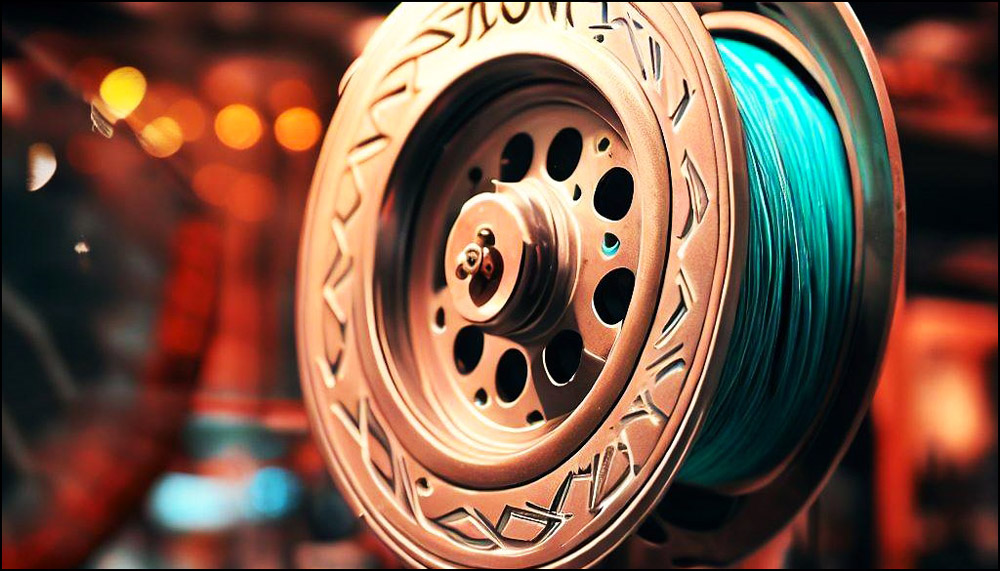
Every fishing line, like a finely tuned musical instrument, has its unique composition, performance traits, and optimal settings. Here, we dissect the three main types of fishing line materials to understand their prowess in the redfish domain.
Monofilament: The Classic Choice 🌀
Monofilament, often termed ‘mono’, is crafted from a single strand of material, usually nylon. Its presence in the angling world has been longstanding, and for good reason.
Ideal Conditions: Mono shines in clear water due to its low visibility, especially when paired with topwater presentations or when a little stretch can act as a buffer against an aggressive redfish.
Fluorocarbon: The Invisible Warrior 🌊💎
Fluorocarbon is revered for its near invisibility underwater. This is due to its refractive index being close to that of water.
Advantages:
- Clarity and Refraction: Its ‘disappearing act’ in water gives anglers an edge, especially in clear conditions.
- Sensitivity: Less stretch than mono means heightened sensitivity to bites.
- Durability: Resistant to UV rays and abrasive elements, making it a lasting choice.
Where Fluorocarbon Shines: Best employed in clear water environments or when fishing in pressured areas where fish are wary of any unnatural elements. It’s also an excellent choice for leader material when using braided mainline.
Braided Lines: Power Packed Performance 💪🌐
Constructed by weaving together multiple strands, braided lines offer a blend of strength and finesse.
Strength-to-Diameter Ratio:
Lean yet Powerful: Braids offer incredible strength for their diameter. This means you can have a thinner line with the same, if not better, strength than thicker mono or fluorocarbon lines.
Best Scenarios for Redfish:
- Heavy Vegetation: The ‘slicing’ nature of braided lines allows you to cut through weeds and lily pads, ideal for marshy redfish habitats.
- Long Casts: The thin diameter means less resistance against the wind, allowing for longer casts.
- Deep Waters: When you need to get your lure down fast without the line floating or stretching.
Each material offers a suite of benefits tailored to specific scenarios. The key is to assess your fishing environment, the behavior of the redfish in that habitat, and select the line that aligns best with those conditions. Happy angling, and may every cast bring you closer to your prize catch! 🏆🐟
Line Diameter and Its Impact 📏🎣
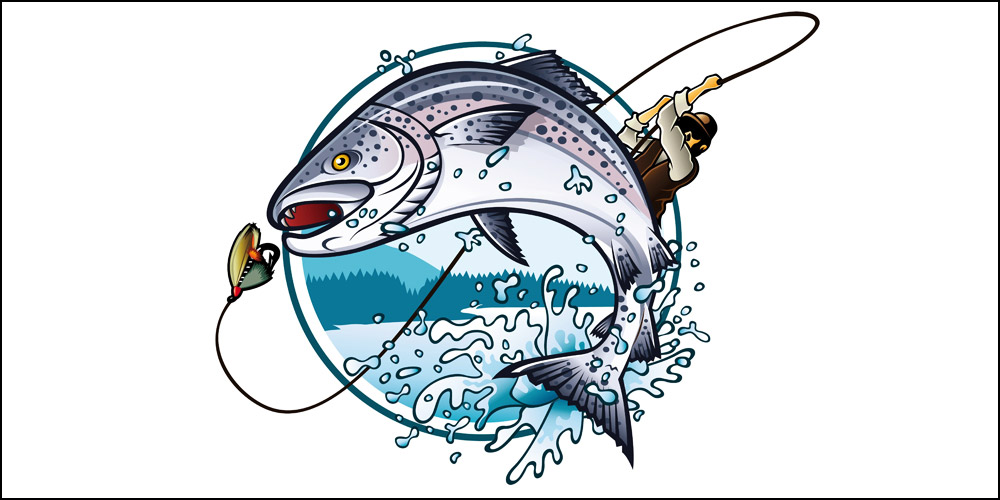
When it comes to fishing, every aspect of your gear counts, right down to the millimeter. One such critical facet is the diameter of your fishing line. It may seem minute (pun intended!), but its impact on your fishing experience, especially when targeting redfish, is significant. Let’s delve deeper.
Casting Distance: Reach Out and Touch the Water 🚀
The line diameter plays a pivotal role in how far you can cast your bait or lure:
- Thin Lines: Offer less resistance against the wind, making them aerodynamic. The result? You can cast further, reaching those distant spots where redfish might be lurking.
- Thick Lines: Can slow down your casting speed due to the increased drag in the air. They might limit your reach, potentially making you miss out on promising areas.
- Takeaway: When trying to achieve maximum casting distance, especially in windy conditions or when pinpoint accuracy is required, a thinner line can be your best ally.
Lure Depth Control: Dive Right In 🌊⬇️
Line diameter also influences how your lure behaves underwater:
- Thin Lines: They sink faster due to less buoyancy and drag. If you’re aiming to get your lure deep quickly, especially in strong currents or deeper waters, a thin line helps in achieving that depth effectively.
- Thick Lines: Tend to have more buoyancy and can create more water resistance. This can prevent your lure from descending quickly or maintaining its desired depth. However, this can be an advantage when using topwater lures or when you want to keep your bait suspended in the middle of the water column.
- Takeaway: Assess the water’s depth and the preferred feeding zone of the redfish on any given day. Choose your line diameter accordingly to place your lure right where it needs to be.
In the vast world of angling, it’s these small details, like line diameter, that often make a world of difference. Whether it’s reaching that far-off hotspot or ensuring your lure dances at the perfect depth, always remember: precision, in both technique and gear choice, leads to perfection in results. Tight lines and may the redfish always be in your favor! 🌟🐟
Setting Up: Knots & Rigging for Redfish – Precision Ties and Tactics 🎣⚙️
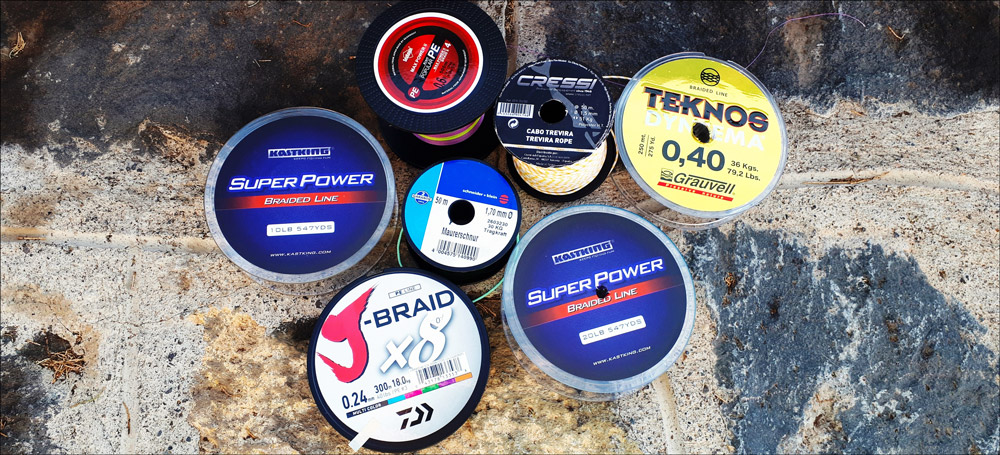
Redfish, with their hard-fighting nature and keen senses, demand not just the right line, but also the right rigging setup. Whether it’s securing your lure with confidence or employing a leader to outsmart this wily species, your preparation can make or break your fishing outing. Here’s your definitive guide.
The Perfect Knots: Secure, Strong, Stealthy 🌀
Knots are the lifeline between you and your catch. Here are some must-know knots for redfish fishing:
- Improved Clinch Knot: A popular choice for its reliability and simplicity. Perfect for attaching hooks, swivels, and lures to your line.
- Loop Knot: Offers your lure more freedom to move, mimicking natural movement in the water. Ideal for twitch baits or any lure you want to impart action to.
- Palomar Knot: Known for its superior strength, this knot is especially beneficial when using braided lines which can be slippery.
Tip: Always moisten your knots before tightening to reduce friction and maintain the line’s strength.
Leaders: The Unsung Heroes 🛡️
In the world of redfish angling, a leader can often be your secret weapon.
Role of a Leader:
- Abrasion Resistance: Redfish habitats often have structures, oyster beds, or vegetation. A leader, especially one made of fluorocarbon, can withstand these abrasive elements better than standard lines.
- Stealth: In clear waters, a thin leader provides the invisibility needed to fool a wary redfish, ensuring they see the lure, not the line.
Choosing the Right Leader:
- Length: Typically, 12 to 24 inches is ideal. However, in super clear waters or when the fish are extra spooky, consider extending to 2-3 feet.
- Material: Fluorocarbon is the top choice due to its clarity and resistance. However, in murkier waters or heavy vegetation, a braided leader might be suitable for its strength.
- Strength: This depends on the size of the redfish you’re targeting. For slot reds, 20-30 lb test is often sufficient. For bull reds or in areas with a lot of structure, you might need to bump it up to 40-50 lb test.
Your knots and rigging setup are as essential as any other part of your fishing arsenal. It’s like the foundation of a house; the sturdier it is, the more resilient the structure. Ensure every knot is tied with care, every leader chosen with thought, and let these small yet crucial elements elevate your redfish game. 🐟🏆
Real-World Testimonials: Lessons from the Lagoon 🌊🗣️
Every angler has a tale to tell – stories of monumental catches, near-misses, and valuable lessons from days spent chasing the elusive redfish. Delve into these firsthand accounts to get a unique perspective on what it takes to master the game.
🎣 Alex from Texas: The Day of the Giants
“I’ve been fishing the Texas coast for over 15 years. One day, using a braided line, I hooked what felt like a submarine! The fight was intense. What I learned? Never underestimate the power of a redfish, especially the bulls. My drag was set too tight, and I almost lost the fish. Now, I always ensure my drag is appropriately set, giving the fish some ‘room’ to run, saving my line (and my pride) from snapping.”
Top Recommendation: Regularly check and adjust your drag, especially when targeting big fish in deeper waters.
🎣 Maya from Louisiana: Clear Waters, Clear Lessons
“Fishing the marshes here is an experience. The water can be crystal clear. I remember losing so many redfish because they’d get spooked seeing my line. It was frustrating. Then I shifted to a fluorocarbon leader. The difference was night and day! I was finally invisible to those sharp-eyed reds.”
Wish I Knew Before: The importance of adapting to water clarity. Always have different line and leader options ready.
🎣 Mike from Florida: The Knot That Slipped
“The thrill of hooking a redfish is unparalleled. But one time, in my excitement, I tied a hasty knot. Big mistake! Just as I was about to land a beautiful slot red, the knot slipped, and away it went, with my favorite lure in tow. It taught me the value of taking a few extra seconds to tie a secure knot.”
Top Recommendation: Learn and perfect a few reliable knots. And always double-check them before casting. 🐟🌟
Common Mistakes to Avoid 🚫🎣
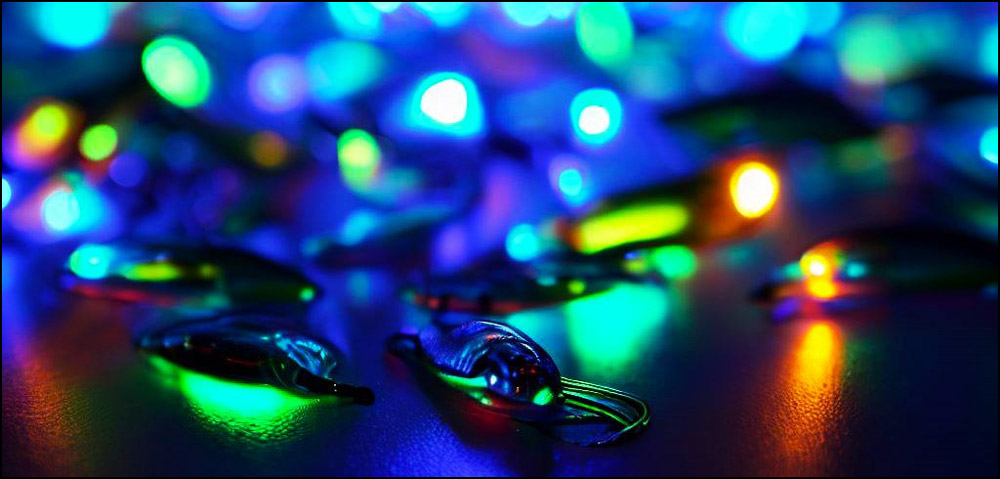
Whether you’re a seasoned angler or just dipping your toes into the world of redfish, everyone’s bound to make a few missteps. However, by understanding the common pitfalls in selecting fishing lines for redfish, you can ensure smoother sailing and a more rewarding angling experience. Let’s uncover these common mistakes and learn how to sidestep them.
Overlooking Line Stretch 📏
The Pitfall: Many anglers often overlook the stretch factor of a line. While a bit of stretch can be good for absorbing shocks, too much can compromise your hook set and decrease sensitivity.
The Fix: Opt for lines with minimal stretch, like braided lines, especially when fishing in deeper waters or when precise lure action is needed.
Neglecting Abrasion Resistance 🌾🪡
The Pitfall: Redfish habitats can be filled with abrasive elements like oyster beds, rocks, and thick vegetation. Using a line without adequate abrasion resistance can lead to unexpected breaks.
The Fix: Always assess the fishing environment. If it’s a rough terrain, opt for a tougher line or use a leader to add that extra layer of protection.
Falling for Gimmicks and Hype 🚁
The Pitfall: With so many products on the market, it’s easy to get swayed by fancy packaging and exaggerated claims. However, not all “innovations” translate to real-world benefits.
The Fix: Stick to reputable brands and do your research. Reviews, recommendations, and real-world testimonials (like the ones you’ve read earlier) can be your guiding light.
Ignoring Line Visibility 👓🌊
The Pitfall: In the quest for strength and durability, anglers sometimes overlook visibility. In clear waters, a conspicuous line can spook redfish.
The Fix: In clear conditions, consider using a fluorocarbon leader for its near-invisibility. Alternatively, select line colors that blend well with the water conditions.
Overloading Your Reel 🎡
The Pitfall: It’s tempting to load as much line as possible onto your reel. However, overloading can result in tangles, reduced casting distance, and other hassles.
The Fix: Adhere to the recommended line capacity of your reel. Remember, it’s about quality and precision, not just quantity. 🌟🐟
FAQ: Cast Farther, Catch Bigger
Conclusion: Line Up Your Success on the Water 🎣🏆
As our deep dive into the world of redfish fishing lines wraps up, it’s clear that choosing the right line isn’t just a minor detail—it’s a pivotal decision that can make or break your angling experience.
From understanding the unique nature of redfish 🐟 and their habitats to deciphering the nuances of different line materials and diameters, the journey has underscored a singular truth: Precision matters.
Remember:
Strength and Sensitivity are your guiding stars. You need a line that can withstand the furious tugs of a battling redfish while also letting you feel even the subtlest of bites.
Environment Adaptability 🌊🌿: Redfish waters are diverse. From clear lagoons to vegetation-rich marshes, your line must be ready to face them all.
Invest Wisely 💰🧠: It’s easy to overlook the importance of your fishing line amidst the plethora of fishing gear available. But, as many seasoned anglers will attest, it’s a cornerstone of successful redfish angling.
As you set forth, reel in hand and passion aflame, make an informed choice. Let your fishing line be not just a tool, but an extension of your angling prowess. Here’s to many triumphant moments on the water, with the shimmering scales of a redfish gleaming at the end of your perfectly chosen line. Happy fishing, and may the tales of your angling adventures inspire many more! 🌊🎣🌟
Additional Resources & References: Equip, Educate, and Excel! 📚🔗
For those eager to dive deeper into the intricacies of redfish angling and to equip themselves with the best tools of the trade, we’ve curated a list of trusted resources and brands. Your journey doesn’t stop here; let these references be the stepping stones to becoming a master angler!
🌐 Trusted Brands for Redfish Fishing Line
Berkley – Known for its innovation and quality, Berkley offers a variety of lines ideal for redfish.
PowerPro – Their braided lines are a favorite among many redfish anglers.
Seaguar – A leading name when it comes to fluorocarbon lines.
Note: Always compare products and read reviews to find the best fit for your needs.
📖 Further Reading Materials
“Redfish Revolution” by James F. Wilson – A comprehensive guide on redfish behaviors, habitats, and the best angling techniques.
“Line Matters: The Angler’s Guide to Fishing Lines” by Lucy Hartman – Dive deeper into the world of fishing lines, their compositions, and their applications.
“Knots & Rigs for Anglers” by Martin A. Clark – Perfect your knot-tying game with this handy guide.
Online Forums & Communities
Redfish Anglers Forum – A vibrant community of passionate redfish enthusiasts sharing their experiences, tips, and tricks.
The Tackle Box Blog – Regular updates on gear reviews, fishing techniques, and more. 🎣📘🌟

I live in Tenerife (Canary Islands) for the last 10+ years and share my daily fishing experiences on my website. Many years of personal experience as a fisherman and the vast experience of my friends allow me to write professionally on any fishing topics (from choosing a flashlight and equipment to deep-sea fishing).
All of my advice is based on practical real-world experience and will be useful to both novice anglers and professionals. Read more about the author.
Affiliate Disclosure: FishReeler.org sometimes gets paid for listings, through sponsors or affiliate programs like Amazon, Ebay, Cabelas, Bass Pro Shop, Shimano, Daiwa, Rapala, Renn, Okuma, KastKing, etс. Clicking a link helps keep FishReeler.org free, at no extra cost to you!
About the author: Each article is verified by the fishing expert Sergio Smirnoff. The articles are written by professional and amateur fishermen with 20+ years of fishing experience.
Note: The views and opinions expressed in this article are those of the authors and do not necessarily reflect the official policy or position of any agency. The articles are for informational purposes only, share your opinions in the comments and join the fishing discussions, let's share our fishing experiences together!

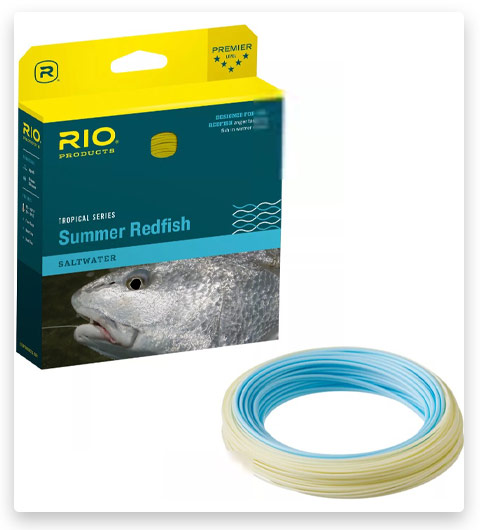
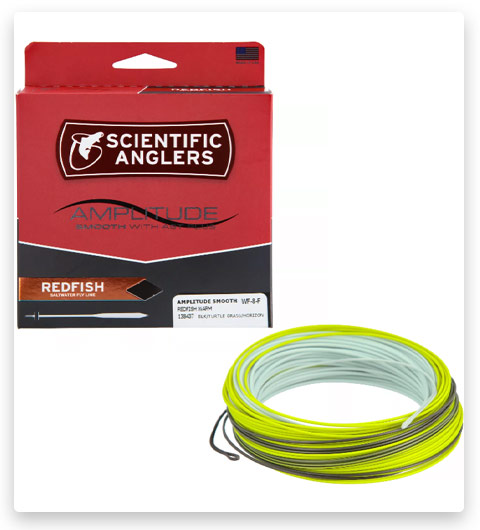
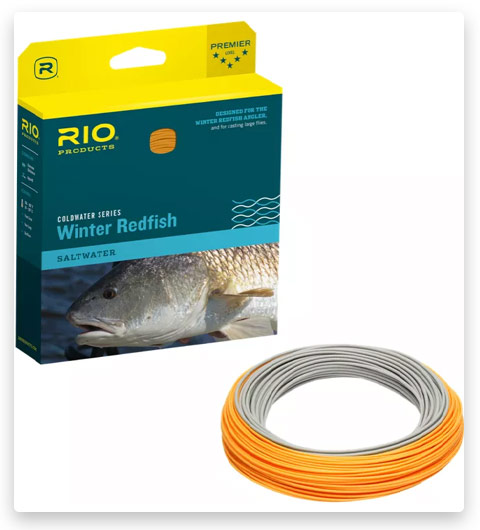
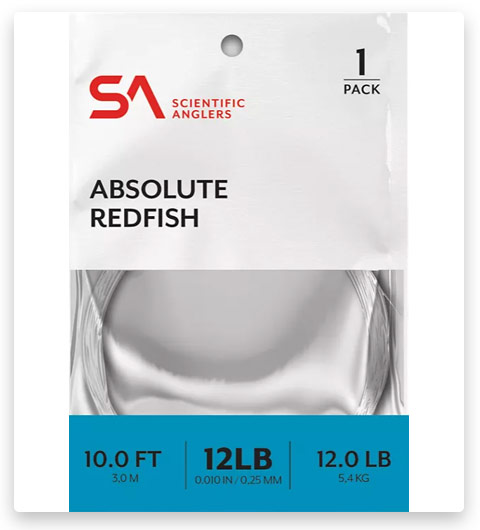
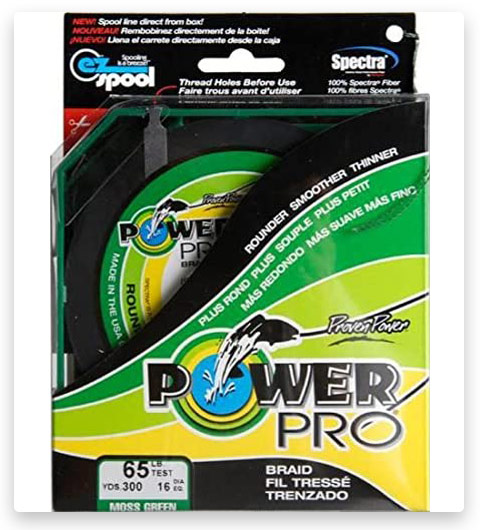
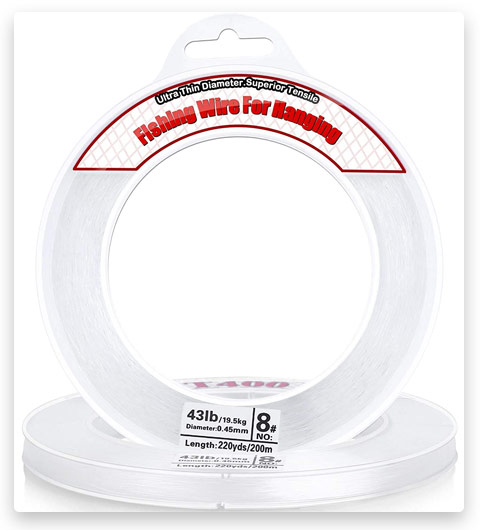
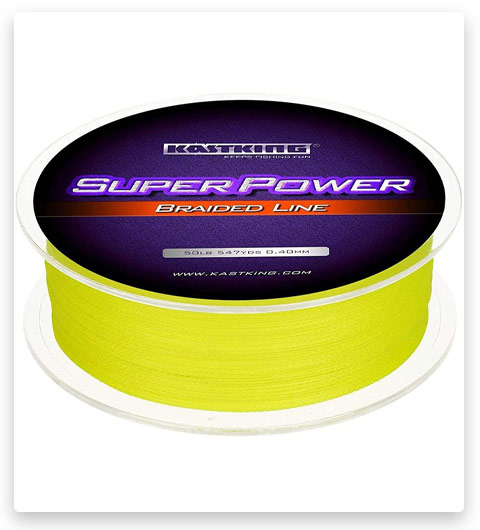
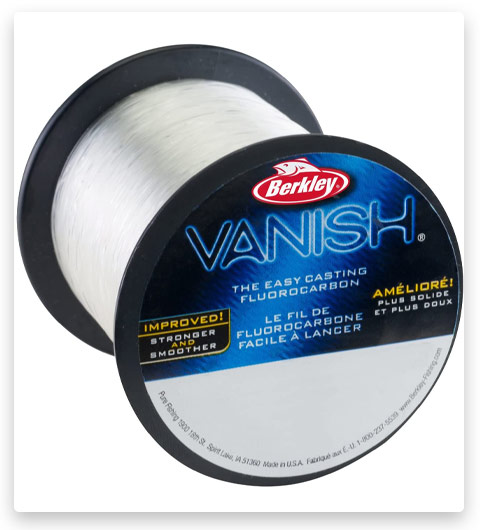
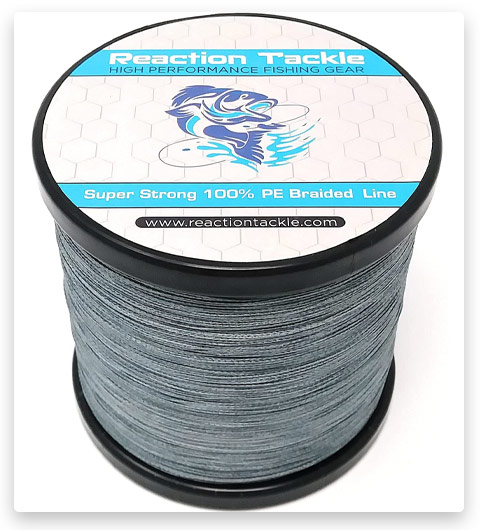
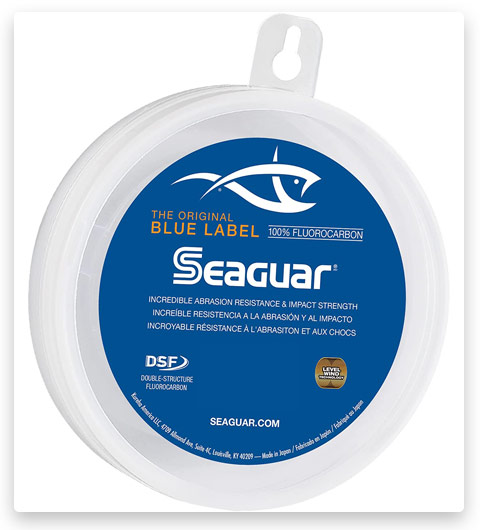
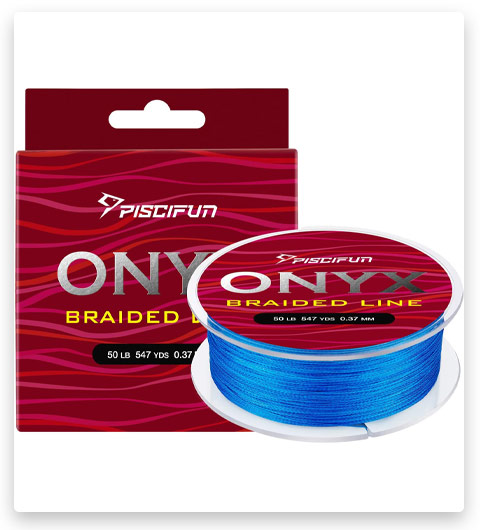
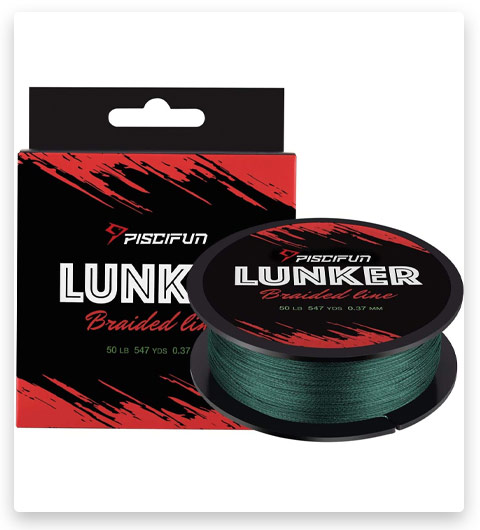

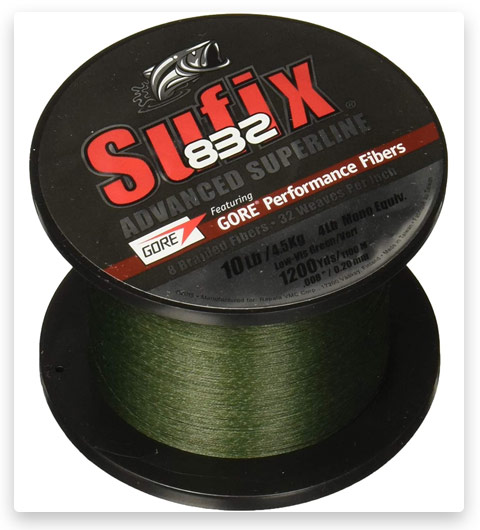
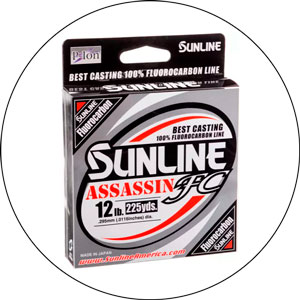
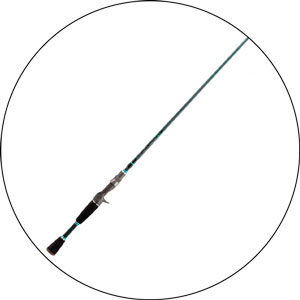
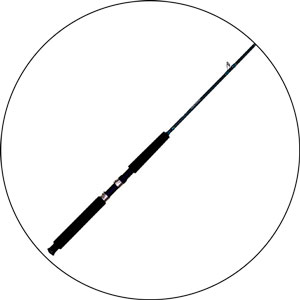
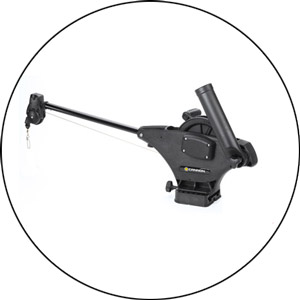
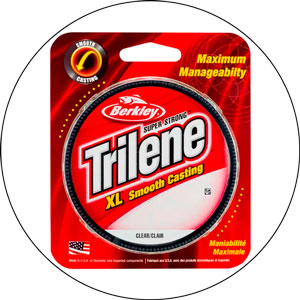
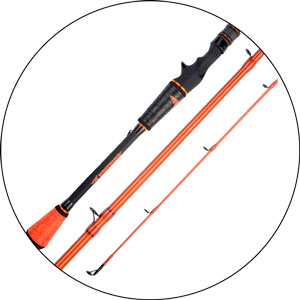
Hey there, great tips for choosing the right fishing line! I agree that as long as it casts and retrieves well, the line doesn’t really matter. For spinning rigs, I recommend using 8-12 lb test monofilament, while for boat rods, you should go for a 20-30 lb test line.
When fishing inshore in the Gulf of Mexico during the summer and fall, I usually fish live baits suspended above or on the bottom for Redfish. In this case, I prefer using a light monofilament leader, around 10-20 lb test and 18-24 inches long. However, when trolling or casting artificial baits, I recommend going up to a 15-30 lb. test as there are lots of toothy neighbors like mackerel, blue fish, and even (gray and speckled) trout that may also bite.
For offshore fishing during late summer and fall, I suggest using a bit heavier boat rod, live mullet 8-10 inches for bait, a 6-8′ 40-50 lb. test monofilament leader, and gear suitable for fish in the 30-50 lb. range, with an occasional cobia/ling. Lastly, the most important thing to remember is to have sharp hooks, lively baits, and all your gear (and hands) squeaky clean.
When I go fishing in bay waters, I usually use a 10-12 pound monofilament line. This is usually sufficient for catching redfish, speckled trout, and flounder. However, lately, I’ve been using a 20-pound braid, which is thinner than 12 lb mono. Although it’s more expensive, it has little stretch, great sensitivity, and abrasion resistance, which makes it worth it. The higher test stuff is necessary for me because lighter lines are just too thin to handle.
For bull reds over 28 inches up to maybe 40, using a 12-pound line is possible, but it can be tough work and hard on both me and the fish. Moreover, here in Texas, these fish would have to be released. Therefore, I prefer to use an extra heavy boat rod with a 20-25 lb test line for such catches. This helps me avoid over-exertion and ensures that the fish can be safely returned to the water.
When it comes to Trout fishing, choosing the right fishing line is crucial. There are a few factors to consider such as strength, casting ability, memory, and visibility. There are three main types of fishing lines available- monofilament, fluorocarbon, and braided lines. While the braided line is strong, it is also highly visible, making it the least favorable option for Trout fishing.
Personally, I prefer the fluorocarbon line as it is strong, has low visibility, smooth casting, and is abrasion-resistant. Good brand fluorocarbon lines are the best choice for Trout fishing. I recommend either a 4lb or 6lb test, depending on your preference of going for quantity or size of Trout. While the 4lb test is easier to cast and less visible, it lacks the strength of the 6lb test.
It is important not to compromise on the quality of the fishing line, as it can greatly impact your fishing success. I highly recommend using the Seaguar Abraz-x fluorocarbon line, which I use on both my 4lb and 6lb test reels. In case Seaguar Abraz-x is not available, I opt for Berkley Vanish Transition.
With over 29 years of fishing experience, I have learned a lot through trial and error. I hope my insights on the Trout fishing lines will be helpful to fellow fishing enthusiasts.
I have been using braided line for almost a decade now and it’s my go-to line for most of my fishing setups. I even use it on my ultralight panfish rod with a 6lb test and on my muskie setup with an 80lb test. The knot that I use is a variation of the regular clinch knot, which has held up for me all these years.
My clinch knot has three important differences from the one shown in most tutorials. Firstly, I wrap the line more times than the usual 5 to 7 wraps shown in tutorials. I use 8-9 wraps for very light lines, 10 wraps for medium lines (around 20lb test), and 12 wraps for heavier lines. This helps prevent the knot from pulling loose and coming undone. Secondly, for the braided line, I pass the working end through the hook eye twice instead of just once like in the standard knot. Finally, I pull on the hook itself instead of the tag end to cinch everything down, which eliminates any slack or loops that can occur during tightening.
My knot is simple, quick to tie, and has never failed me in all my years of fishing. It meets my first criterion for a good knot – it holds stronger than the line itself. I fish in a variety of freshwater environments, including many river fishing trips where I get snagged a lot. But I never cut my line and have pulled until either my lure comes loose, I reel the snag up onto land, or the line snaps. In all these years, I have never had my knot fail even once.
While I haven’t tried other knots, I don’t see the need to experiment when my knot checks all my boxes and gives me a 100% success rate. It’s important to have a reliable knot that you can count on, especially when fishing for different species and in different types of waters.
I completely agree that finding the best fishing line can be a never-ending pursuit, with new and improved formulas being introduced all the time. Personally, I have found satisfaction in using three brands exclusively: Trilene Big Game, Suffix fluorocarbon, and any kind of Stren.
For catching trophy-striped bass, I rely on Trilene Big Game as my main line with a suffix fluorocarbon leader. For smaller fish that I catch for eating, I use Stren original. During the late winter and early spring, I fish for trophy brown and rainbow trout in a deep lake, and I use Suffix in 4 or 6 lb test for that.
I have never experienced a fish breaking my line due to a manufacturer’s failure or mishap. Instead, I attribute any issues to bad knots or user errors. That being said, I always stay away from no-name or cheaply made lines, and look for popular brands that sell a lot so I can expect fresher lines.
Time, sunshine, and saltwater are a fishing line’s worst enemies, so I change my line frequently to avoid any issues with fraying or cracking due to heat. An overly dry line can also lead to disaster, so it’s important to keep an eye out for that.
While some people may argue for a co-polymer line, I personally never use it and do not trust it. For me, sticking with the brands and types of lines that I have had success with has been the key to my fishing success.
I have found that using fluorocarbon leaders is a great way to make the terminal tackle nearly invisible to fish. While many anglers today use the braided line as their main line, it cannot hold up to abrasion as well as monofilaments. This is why I still use fluorocarbon leaders, especially when I am targeting fish that are known to be skittish.
Using the braided lines as the terminal tackle can often result in lost fish or lures. Although it has been done successfully, it requires additional gear such as shock leaders to prevent the braided line from breaking due to the lack of give in the line.
Braided line also tends to be slippery, which limits the knots you can use. This is not ideal when you need to use a discreet knot near the terminal tackle. Fluorocarbon leaders, on the other hand, offer greater knot strength and flexibility, allowing you to tie the knots you need for optimal bait presentation.
While a braided line can be a useful tool, I still prefer to use fluorocarbon leaders when fishing for species that require a stealthy approach. By doing so, I have found greater success in my fishing ventures.
I think it’s important to note that when it comes to fishing lines, diameter isn’t always the biggest concern. Rather, the visibility and action of the line are the key factors to consider. If the diameter is larger, the line tends to be more visible, making it easier for fish to detect and ultimately reject your bait or lure. However, there are some exceptions to this rule.
For instance, a braided line or super line has a thin diameter in comparison to other fishing lines of the same strength, yet it is also opaque. This can spook certain fish, so it’s often paired with a leader made of either monofilament or fluorocarbon to increase stealth. Fluorocarbon fishing lines, in particular, have a refractive index similar to that of water, making them nearly invisible underwater. So, a larger diameter fluorocarbon line can offer added strength without compromising stealth.
Another factor to consider is the action of your bait or lure. A thicker diameter line is often stiffer and has more memory, which can make your presentation appear mechanical or unnatural. Additionally, larger diameter lines create more drag in the water due to their increased surface area. For example, when fishing in a river, I use a braid as my mainline to reduce drag on my lure for a more natural presentation.
It’s worth noting that there are situations and fish species where line diameter doesn’t seem to have a significant impact. However, in general, fish are more likely to spook due to line visibility and its effect on the presentation rather than the diameter of the line itself. Ultimately, each type of line has its own strengths and weaknesses, which is why it’s crucial to consider all factors when choosing the best line for your particular situation.
I’ve found that braid is not necessarily superior to mono, as both have their own set of advantages and disadvantages. One advantage of braid is its thin diameter, which allows for more lines to be spooled on a reel and provides greater casting distance. Additionally, the braid has very little stretch, which adds sensitivity to the line and makes it easier to detect bites.
However, the lack of stretch in a braid can also be a disadvantage in certain situations, such as when a big fish hits near the boat or shore, where the stretch in mono can be crucial in preventing a snapped line or rod. Another disadvantage of braid is its high visibility, which can spook fish. Many anglers combat this issue by using a mono or fluorocarbon leader with their braid, but this adds an extra knot to the setup, which can be a potential point of failure.
Moreover, braid is not as durable as mono in areas with sharp rocks and shells, as it can be quickly shredded. This is where adding a mono or fluorocarbon leader comes in handy, but again, this adds an extra knot to the setup.
In the end, it’s important to recognize that braid and mono are simply different, and choosing one over the other depends on the situation at hand. It’s important to weigh the advantages and disadvantages of each before making a decision.
When I’m fishing in shallow flats, I find that using an artificial shrimp under a popping cork is quite effective. Live shrimp also work great for this kind of fishing. Another good option is finger mullet swim baits. Dead shrimp and cut shad fished on the bottom can also be quite effective, especially in deeper water at the edge of channels. When fishing in areas with grass, I usually try to cast my bait in the clear sandy areas between the grassy areas for the best results.
When it comes to fishing for redfish, the right gear can make all the difference. Choosing a high-quality fishing line designed specifically for redfish can help you to fish more effectively and with greater success. By providing increased sensitivity, strength, casting distance, low visibility, and resistance to abrasion, a good redfish fishing line can give you the edge you need to hook and land trophy redfish.